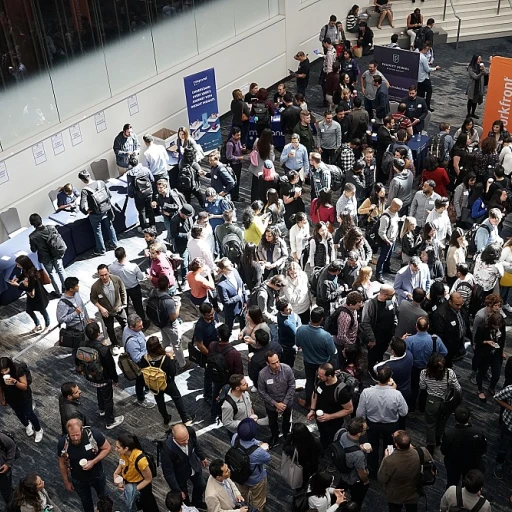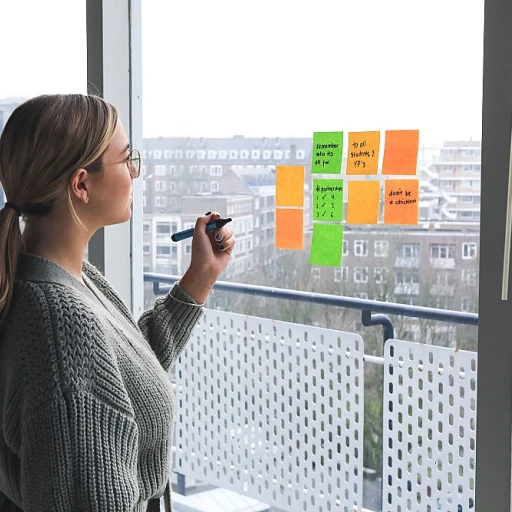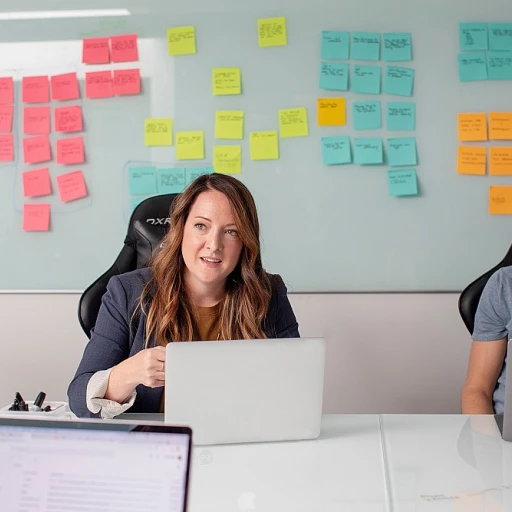Understanding the Core of People Development
Getting to the Heart of Employee Growth
Imagine a company where every employee feels valued, their growth prioritized, and their potential unlocked. That's the dream, right? But how do we turn this dream into reality? It all starts with understanding the core of people development. In a world where businesses are constantly evolving, investing in your team’s growth isn't just a nice-to-have; it's a necessity.
People development is more than just sending employees to a training session. It's about creating an environment where learning and growth are embedded in the company's DNA. This approach not only helps employees but also propels the organization forward, aligning with business goals and objectives. It's a win-win.
The Importance of Aligning Development with Business Needs
It's not enough to just focus on individual growth. The trick is to align these development goals with the company's objectives. When employees' personal development aligns with the organization's strategy, magic happens. The business thrives, and employees feel more engaged and motivated.
Consider this: a company wants to expand its digital marketing efforts. By identifying skill gaps and providing targeted development opportunities, employees can grow in areas that directly impact the company's success. This strategic alignment ensures that both the business and its people are moving in the same direction.
Creating a Culture of Learning and Growth
Developing a culture where continuous learning is the norm is crucial. It's about more than just offering development programs; it's about fostering an environment where employees feel encouraged to learn and grow. When a company prioritizes learning, it signals to employees that their development matters, leading to higher engagement and satisfaction.
Personal stories often highlight the power of a strong development culture. Take Sarah, a mid-level manager who felt stuck in her role. Her company introduced mentorship programs and skill-building workshops, which reignited her passion for work and opened new career paths. This is just one example of how focusing on people development can transform both employees and the organization.
To explore more about creating effective career paths and employee growth, check out our detailed guide.
Aligning Development Goals with Business Objectives
Connecting Employee Growth with Company Success
When it comes to employee development, aligning personal growth with the company's goals is like hitting two birds with one stone. It's about creating a win-win situation where employees feel valued and motivated, while the company benefits from a more skilled workforce. This alignment ensures that the efforts put into training and development are not just ticking boxes but are strategically contributing to the business objectives.
Take a moment to consider how a development strategy can help bridge the gap between individual aspirations and organizational goals. For instance, if a company is aiming to expand its digital capabilities, focusing on enhancing employees' digital skills can directly support this objective. This not only empowers employees but also positions the company for future success.
Setting Clear Development Goals
To effectively align development goals with business objectives, clarity is key. Clear, measurable goals give both employees and managers a roadmap to follow. When everyone knows what they're working towards, it creates a sense of purpose and direction. This clarity can boost employee engagement and motivation, as individuals understand how their personal growth contributes to the bigger picture.
In practice, this means having open discussions with employees about their career aspirations and how these align with the company's needs. This collaborative approach can lead to tailored development plans that are both meaningful and impactful. For more insights on aligning performance and development, check out our article on mastering the art of performance management.
Building a Cohesive Development Plan
Creating a cohesive development plan involves more than just listing skills to be acquired. It requires a strategic approach that considers the company's long-term vision and the evolving needs of its workforce. By identifying key skills that will drive the company forward, businesses can tailor their development programs to fill any skill gaps.
Consider implementing mentorship programs where experienced employees can guide others, fostering a culture of continuous learning and knowledge sharing. This not only enhances skills but also strengthens team bonds and creates a supportive work environment.
Encouraging Ownership and Accountability
Encouraging employees to take ownership of their development journey can lead to more engaged and proactive individuals. When employees feel responsible for their growth, they are more likely to seek out learning opportunities and take initiative in their roles. This sense of accountability can be nurtured through regular feedback and recognition of achievements.
Organizations can support this by providing resources and opportunities for personal development, such as workshops, online courses, and access to industry conferences. By investing in their employees' growth, companies not only enhance skills but also build a loyal and committed workforce.
Identifying and Cultivating Key Skills
Essential Skills for Tomorrow
In the whirlwind of business, identifying the skills that stand out can change the game for your organization. Yes, some talents have always been invaluable, like effective communication and leadership abilities. Those remain gold, yet the pace of change invites new skills into the spotlight. Think about digital literacy, adaptability, and creative problem-solving. As technology races ahead, these abilities will help employees roll with the punches and keep businesses competitive. Also, developing soft skills like emotional intelligence ensures your team connects meaningfully within diverse work environments. Crafting a smart employee development strategy means defining these skill gaps. Pairing people development opportunities with business goals ensures that each step your team takes moves the company forward. Consider tools like skills assessments and feedback loops to refine your development strategy.Spotting Talent for Development
Unearthing the talent within your company takes a keen eye. While every employee has unique strengths, not everyone has roles that let these strengths shine. That’s where mentorship programs slot in. They help identify hidden talent, guiding employees toward personal development paths where they can excel. By fostering a sense of belonging, employees are more engaged and committed, leading to long-term growth, both personally and professionally. Promoting a culture that nurtures skill development cements employee engagement for the long haul. It’s like planting seeds for future business triumphs. For some insights on integrating people development with company objectives, have a look at mastering performance management.Offering Development Opportunities
Ensuring employees have access to a buffet of learning development opportunities remains key to retention and motivation. Offering a mix of training programs, from leadership development sessions to online courses, gives employees the flexibility to pursue growth aligned with their personal goals. Encouraging self-directed learning also empowers employees. When individuals feel in control of their professional development, they’re more engaged and satisfied. This sense of ownership over their learning journey strengthens company culture and often translates into greater productivity. So, as you shape your strategy around people development, keep an ear open for what your team finds most useful. Their feedback not only sharpens the focus on skill gaps but also guides future training initiatives. After all, your team knows best where their passions and expertise intersect with your business goals. It’s an ongoing dance of progress, with every step enhancing company growth and opening doors to future ventures. Looking for more ideas? Learn how a smart learning and development strategy can amplify your team’s potential. A clear plan focused on skills and development, wrapped in a culture of growth, fuels success for every corner of your organization.Leveraging Technology for Development
Boosting Employee Growth with Tech
Technology isn't just a buzzword in the office; it's a game-changer for employee development. Think about how your smartphone has become your go-to for everything. Similarly, in the workplace, tech can transform how we approach learning and growth. By integrating technology into your development strategy, you can create a more dynamic and personalized experience for your team.
One way to leverage technology is through online learning platforms. These platforms offer a wide array of courses that employees can access anytime, anywhere. This flexibility not only supports continuous learning but also allows employees to tailor their learning paths according to their individual goals and needs. According to a report by LinkedIn, 94% of employees say they would stay at a company longer if it invested in their learning and development.
Using Tech to Identify and Fill Skill Gaps
Technology can also play a pivotal role in identifying skill gaps within your organization. With tools like AI-driven analytics, you can get a clearer picture of where your team stands in terms of skills and where they need improvement. This insight helps in crafting effective development plans that are aligned with your business objectives.
Moreover, virtual reality (VR) and augmented reality (AR) are making waves in training programs. These technologies provide immersive experiences that can simulate real-world scenarios, making training more engaging and effective. Imagine a leadership development program where future leaders can practice decision-making in a risk-free virtual environment. This kind of hands-on learning can significantly boost confidence and competence.
Fostering a Culture of Innovation
Integrating technology into your employee development strategy isn't just about the tools; it's about fostering a culture of innovation. Encourage your team to explore new technologies and experiment with different learning methods. This approach not only enhances skills but also promotes a mindset of continuous improvement and adaptability.
Remember, the goal is to create an environment where employees feel empowered to take charge of their own development. By providing the right tools and resources, you help them grow both personally and professionally, which in turn drives the growth of your company.
Creating a Culture of Continuous Learning
Building a Learning Environment that Thrives
Creating a culture where continuous learning is not just encouraged but woven into the fabric of everyday work can transform a company. It's about fostering an environment where employees feel motivated to develop their skills and grow professionally. This isn't just a nice-to-have; it's a must for any organization aiming for long-term success.
When employees see that their company invests in their personal and professional development, it boosts morale and engagement. This commitment to growth helps in retaining top talent and attracting new ones. But how do you make this culture shift?
Practical Steps to Foster Continuous Learning
- Encourage Curiosity: Make learning part of the daily routine. Encourage employees to ask questions, explore new ideas, and share knowledge with their peers.
- Offer Diverse Learning Opportunities: Not everyone learns the same way. Provide a mix of training programs, workshops, online courses, and mentorship programs to cater to different learning styles.
- Lead by Example: Leadership development is crucial. When leaders show a commitment to their own learning, it sets a powerful example for the entire team.
- Recognize and Reward Growth: Celebrate achievements and progress. Recognizing employee development can reinforce the importance of continuous learning.
Integrating Learning into Business Goals
To make learning truly effective, it should align with the company's business goals. This alignment ensures that the skills and knowledge employees gain are directly applicable to their roles and the organization's objectives. By doing so, companies can close skill gaps and prepare their teams for future challenges.
Remember, fostering a culture of continuous learning is not a one-time effort. It requires ongoing commitment and a strategic approach to development plans. With the right mindset and resources, any company can create an environment where learning and growth go hand in hand.
Measuring the Impact of Development Initiatives
Assessing the Effectiveness of Employee Development Efforts
To truly gauge the effectiveness of any employee development plan, it's crucial to gather concrete evidence that highlights the positive changes in your workforce. Measuring the impact not only ensures alignment with business goals but also provides insights into the learning journey of your team. Here's how you can do it:- Set Clear, Measurable Goals: When defining development goals (discussed in part two), ensure they're specific and quantifiable. This means identifying key performance indicators (KPIs) that directly link to the skills and knowledge you want to improve.
- Feedback and Reflection: Encourage people to provide feedback on training and development programs. It's vital for understanding how initiatives are resonating with participants and how they impact motivation and day-to-day work.
- Analyze Business Outcomes: Compare pre- and post-development data. Look for improvements in productivity, quality, and customer satisfaction to determine if your business strategy is supported by your employee development programs.
- Track Employee Engagement: Higher engagement often correlates with enhanced employee development. Monitor engagement scores through surveys and interviews to assess how connected and committed people feel.
- Regular Reviews: Continuous learning requires regular check-ins. These reviews should involve both leadership and employees, fostering an open dialogue about growth opportunities, learning paths, and potential leadership development.
- Adjust Strategies as Needed: Be prepared to fine-tune your approach based on the feedback and results collected. This iterative process of refinement helps better align learning development with evolving business needs over the long term.








